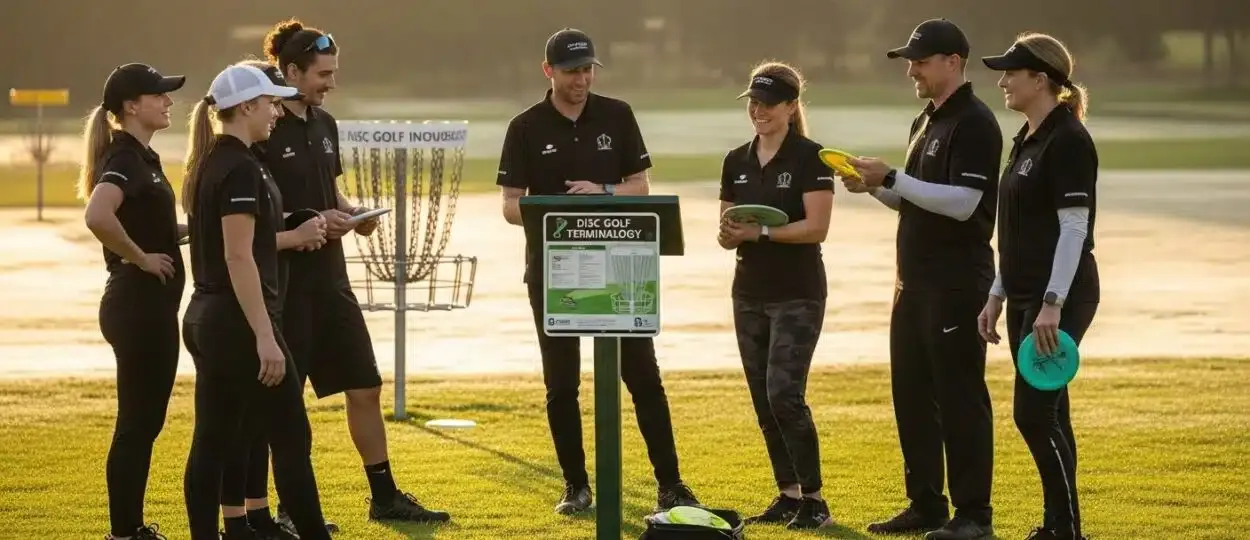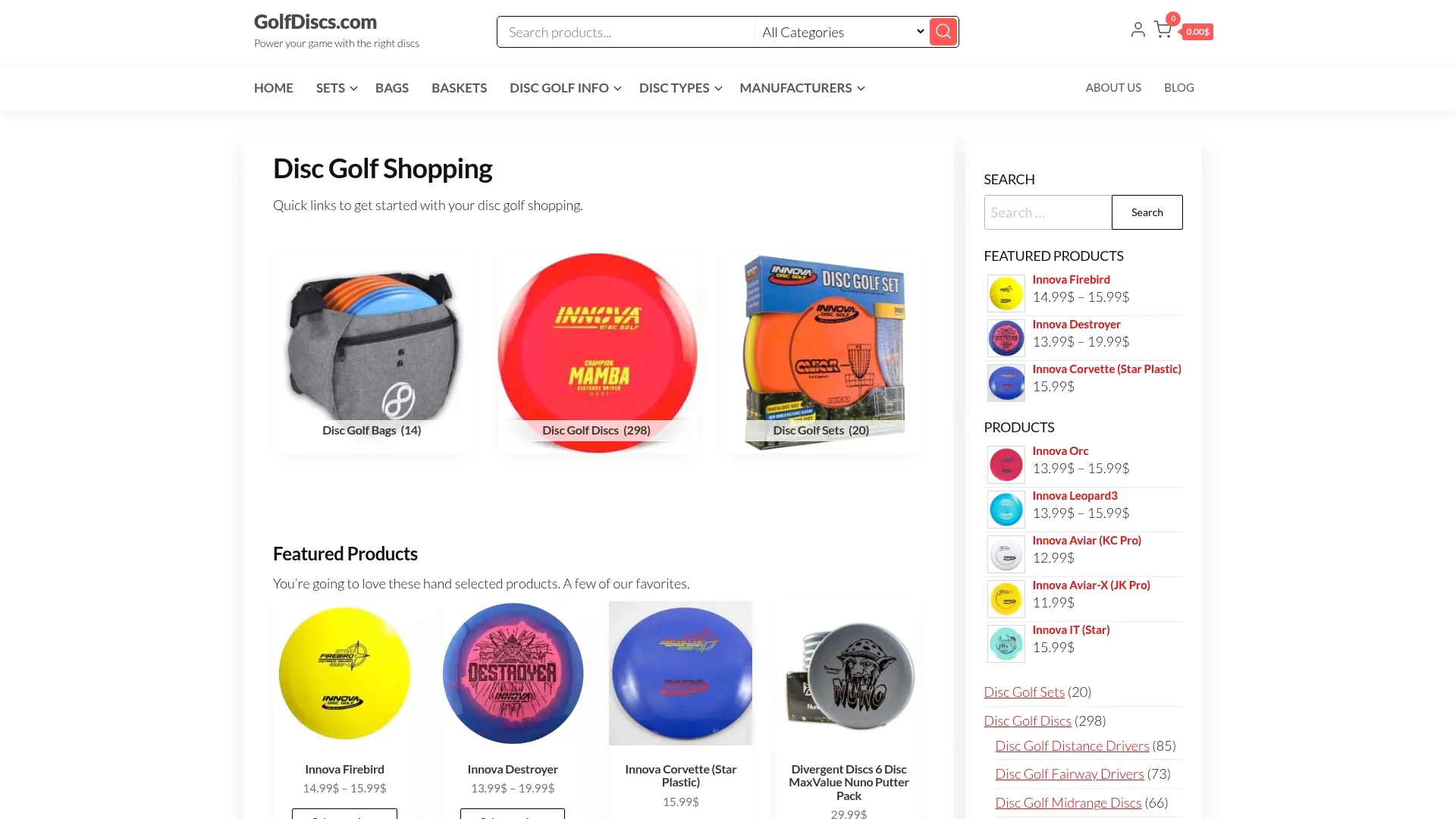
Disc Golf Terminology: Key Terms Every Player Should Know
Disc golf has its own language and it can feel like you need a dictionary just to keep up on the course. Some of the slang and scoring terms might leave you scratching your head even if you already know how to throw. But did you know that an ‘albatross’ in disc golf means finishing a hole three throws under par which is even rarer than a hole-in-one? Get ready to discover the surprising words players use that could change how you experience the game.
Table of Contents
- Essential Disc Golf Terminology Explained
- Common Terms Used By Disc Golf Players
- Disc Types And Throwing Techniques
- Unique Slang And Lingo In Disc Golf
Quick Summary
| Takeaway | Explanation |
|---|---|
| Understand key scoring terms | Familiarize yourself with terms like par, birdie, and bogey to track your performance effectively. |
| Know different disc types | Recognize the difference between drivers, midrange discs, and putters to select the right equipment for various throws. |
| Master fundamental throwing techniques | Learn backhand, forehand, and overhand throws to improve your gameplay and adaptability on the course. |
| Familiarize yourself with course terminology | Understand terms like tee area, fairway, and out of bounds for better navigation and play strategy. |
| Learn disc golf slang for community connection | Use terms like grip and rip and tree love to engage with others and feel more integrated into the disc golf culture. |
Essential Disc Golf Terminology Explained
Disc golf has a unique language that can be intimidating for newcomers. Understanding the key terminology is crucial for enjoying the game and communicating effectively with other players. From scoring terms to disc types and course features, mastering these essential words will help you feel more confident on the course.
Scoring Terms: Understanding the Basics
Every disc golfer needs to know the fundamental scoring terminology. According to the Professional Disc Golf Association, the scoring system borrows terminology from traditional golf. A par represents the expected number of throws to complete a hole. When you throw the disc into the basket in fewer throws than par, you’ve scored a birdie. If you take one more throw than par, that’s a bogey. More advanced players aim to consistently score birdies and avoid bogeys.
The scoring system extends beyond these basic terms. A hole in one occurs when a player completes the hole with a single throw from the tee area, which is an exceptional achievement in disc golf. Players track their total score relative to par throughout the round, with the goal of having the lowest possible score.
Disc Types and Throwing Techniques
Understanding disc terminology is essential for selecting the right equipment and improving your game. Disc golf’s comprehensive terminology guide highlights several key disc types. Drivers are designed for maximum distance, with sharp edges that cut through the air. Midrange discs offer more control and are ideal for shorter, more precise throws. Putters are used for the final approach and landing in the basket, featuring a more rounded edge for accuracy.
Throwing techniques also have specific names. A hyzer is a throw where the disc curves left for right-handed players (or right for left-handed players), while an anhyzer curves in the opposite direction. Rollers are unique throws where the disc is intentionally made to roll along the ground, which can be useful in navigating challenging terrain.
Course and Playing Terminology
Disc golf courses have their own specialized vocabulary. The tee area is where players begin each hole, typically marked by a designated launching point. The fairway represents the primary path to the basket, with various obstacles and terrain challenges. A **mandatory†or mando is a course feature that requires players to throw the disc on a specific side of an object, adding strategic complexity to the game.
Players also use terms to describe specific situations. A lie is the exact spot where a player’s disc has landed and from which the next throw must be made. Out of bounds areas penalize players with additional throws if their disc lands in these designated zones. Some courses feature water hazards or mud pits that add additional challenge and require strategic throwing.
For players looking to dive deeper into disc golf terminology, check out our comprehensive guide to disc golf terms. Understanding these terms will not only improve your gameplay but also help you communicate more effectively with fellow disc golf enthusiasts.
Common Terms Used by Disc Golf Players
Disc golf players develop a rich and nuanced language that goes beyond basic game mechanics. This specialized vocabulary helps players communicate technique, strategy, and game experiences more precisely. Understanding these common terms can help newcomers feel more integrated into the disc golf community and improve their overall gameplay understanding.
Player Performance and Skill Terminology
Player performance in disc golf is described through a variety of specific terms. According to the Professional Disc Golf Association, player ratings are numerical representations of a player’s skill level. An ace represents an extraordinary achievement where a player completes a hole in a single throw directly from the tee area. Tournament players often track their scratch scoring average (SSA), which indicates their consistent performance relative to the course difficulty.
Players also use terms to describe their skill progression. A sandbagger refers to a player who intentionally maintains a lower skill rating to compete in easier divisions. Rec players are recreational participants, while advanced and pro categories represent increasingly competitive skill levels.
Equipment and Technique Terminology
Beyond basic disc types, players use specific terms to describe equipment characteristics and throwing techniques. Stability describes a disc’s flight pattern, with overstable discs naturally turning left for right-handed throwers and understable discs providing more turn and potential distance. Break-in refers to how a disc’s flight characteristics change as it experiences wear from repeated throws.
Throwing techniques have intricate terminology. A power grip involves holding the disc firmly with all fingers, maximizing throwing potential. Staggered stance describes a player’s foot positioning during a throw to generate maximum power. Release angle indicates the disc’s orientation when leaving the player’s hand, critically influencing its flight path.
Course and Competition Terminology
Disc golf courses and competitions have their own specialized language. According to the PDGA’s Official Rules, a credit can be awarded for unusual course obstacles, while drop zones are designated areas where players must throw if their previous throw landed in a challenging location. Card mates refer to the group of players competing together during a round.
Competitive players understand terms like division (skill-based competition category), pool play (initial tournament rounds), and cut (elimination of lower-performing players). Players might discuss wind conditions, ground play, and recovery shots that demonstrate their strategic thinking and adaptability.
Explore our comprehensive guide to disc golf player terminology to deepen your understanding of this vibrant sport’s unique language. Mastering these terms will not only improve communication but also enhance your appreciation of disc golf’s rich culture and competitive spirit.
Disc Types and Throwing Techniques
Understanding disc types and throwing techniques is fundamental to mastering disc golf. Each disc and throwing style has unique characteristics that impact distance, accuracy, and overall performance. Players must develop a nuanced approach to selecting discs and perfecting their throwing methods to excel in the sport.
Disc Categories and Characteristics
Disc golf features three primary disc categories, each designed for specific purposes. According to the Professional Disc Golf Association, drivers are engineered for maximum distance, featuring sharper edges and aerodynamic profiles that enable long-range throws. Midrange discs provide more control and accuracy, bridging the gap between drivers and putters. These discs offer versatility for intermediate distances and more precise trajectory management.
To help you quickly compare the primary disc categories in disc golf, here’s a summary of their characteristics and ideal uses:
| Disc Type | Key Characteristics | Best For |
|---|---|---|
| Driver | Sharp edge, aerodynamic, maximum speed | Long-distance throws |
| Midrange | More rounded edge, balanced control and distance | Controlled, intermediate throws |
| Putter | Blunt, rounded edge, high stability | Short-range, accurate shots |
Putters represent the most specialized disc type, designed for short-distance accuracy and landing in the basket. They feature blunt edges and rounded profiles that prioritize stability and predictable flight paths. Disc selection involves understanding each disc’s flight rating system, which typically includes four numeric values representing speed, glide, turn, and fade. These ratings help players predict a disc’s behavior during flight.
Fundamental Throwing Techniques
Mastering throwing techniques is crucial for disc golf success. The University of Massachusetts Amherst’s recreational sports guide highlights three primary throwing methods. The backhand throw remains the most common technique, where players swing the disc across their body, similar to a traditional baseball throw. This method provides natural power and consistency for most players.
The forehand or sidearm throw offers an alternative technique, involving a throwing motion similar to skipping a stone. This technique can be advantageous in navigating complex course obstacles or achieving different disc flight angles. Overhand throws, including tomahawk and thumber variations, provide unique options for challenging course situations, allowing players to throw over obstacles or achieve specialized trajectories.
Here’s a concise comparison of the most common disc golf throwing techniques and their main features:
| Throwing Technique | Common Name(s) | Throwing Motion Description | Typical Use |
|---|---|---|---|
| Backhand | Traditional Throw | Across the body | General use; power and consistency |
| Forehand | Sidearm, Flick | Flick/sidearm motion, like skipping a stone or baseball sidearm | Navigating obstacles; varied angles |
| Overhand | Tomahawk, Thumber Hammer |
Vertical, over the head motion | Throwing over or around obstacles |
Advanced Throwing Dynamics
Advanced players understand that disc selection and throwing techniques involve sophisticated nuances. Release angle critically influences a disc’s flight, with slight variations in hand position dramatically affecting trajectory. Anhyzer and hyzer releases describe the disc’s initial angle relative to the player’s body, enabling advanced players to create complex flight paths.
Wind conditions further complicate throwing dynamics. Headwinds and tailwinds require players to adjust disc selection and throwing technique, selecting more stable discs or modifying release angles to maintain intended trajectories. Experienced players develop an intuitive understanding of how disc characteristics interact with environmental conditions.
Learn more about advanced disc selection techniques to refine your disc golf skills. Mastering these intricate details transforms disc golf from a casual activity into a nuanced, strategic sport that rewards precision and understanding.
Unique Slang and Lingo in Disc Golf
Disc golf has developed a rich and colorful language that goes beyond standard terminology, reflecting the sport’s vibrant culture and community. This unique slang allows players to communicate experiences, techniques, and game moments with nuanced expression. Understanding these informal terms adds depth to a player’s engagement with the sport and helps newcomers feel more connected to the disc golf community.
Performance and Shot Terminology
Players have created inventive slang to describe different types of throws and performance outcomes. According to the Professional Disc Golf Association’s discussion archives, terms like grip and rip describe a powerful throw where players use maximum force, while tree love humorously refers to a shot that unexpectedly hits a tree. Exceptional scoring achievements have their own playful nomenclature. A condor represents a remarkable four throws under par, and an albatross signifies an incredibly rare three throws under par.
Some slang terms capture the emotional experience of playing. A crusher describes a phenomenally long throw, while woody indicates a challenging shot through dense forest areas. Players might talk about chain music when a disc successfully hits the basket’s chains, creating a distinctive sound of achievement. Death putts describe high-pressure putting situations where missing could significantly impact the player’s score.
Course and Equipment Slang
Wikipedia’s disc golf glossary reveals the creative language players use to describe course features and equipment. A turf monster refers to uneven ground that causes unexpected disc behavior, while disc graveyard describes areas with numerous lost or abandoned discs. Players might warn each other about water dragons lurking in ponds or streams ready to swallow expensive discs.
Equipment discussions are filled with colorful terminology. A beat-in disc has been used extensively, changing its flight characteristics. Disc herpes humorously describes small nicks and scratches accumulated during play. Players might discuss disc personalities, suggesting that each disc has unique flying characteristics that become more pronounced with use.
Community and Social Terminology
The disc golf community has developed social slang that reflects its inclusive and fun-loving culture. Card mates refers to the group of players competing together, while sandbaggers describe players who intentionally underperform to compete in easier divisions. Casual rounds represent relaxed, non-competitive play where the focus is on enjoyment rather than strict scoring.
Some terms reflect the sport’s laid-back attitude. Mulligan allows a player to retake a throw without penalty in casual settings, while disc diplomacy describes resolving course disputes with good-natured communication. The phrase metal in chains celebrates successfully landing a disc in the basket, embodying the sport’s celebratory spirit.
Explore our comprehensive guide to disc golf lingo to fully immerse yourself in the sport’s unique language. Understanding these terms transforms disc golf from a simple game into a rich, communicative experience that extends far beyond throwing a disc into a basket.

Frequently Asked Questions
What are the key scoring terms in disc golf?
Key scoring terms in disc golf include ‘par,’ which represents the expected number of throws to complete a hole; ‘birdie,’ for completing a hole under par; and ‘bogey,’ for taking one extra throw over par. An ‘ace’ is a hole-in-one, achieved in a single throw.
What are the different types of discs used in disc golf?
Disc golf features three primary types of discs: ‘drivers’ for maximum distance, ‘midrange discs’ for control and accuracy, and ‘putters’ for short-range throws aimed directly at the basket. Each type serves a specific purpose in gameplay.
How do I improve my throwing technique in disc golf?
To improve your throwing technique in disc golf, practice the three primary methods: ‘backhand’ for general use, ‘forehand’ for navigating obstacles, and ‘overhand’ for throwing over challenges. Focus on grip, stance, and release angle for better accuracy and distance.
What does the term ‘disc stability’ mean?
‘Disc stability’ refers to a disc’s flight characteristics, with ‘overstable’ discs curving sharply and ‘understable’ discs allowing for longer distances. Understanding stability helps players choose the right disc for different throwing situations.
Turn Disc Golf Knowledge Into Game-Changing Gear Choices
You have just learned the language and insider terminology that can make the difference between frustration and excitement on the disc golf course. Understanding terms like stability, overstable, and hyzer is the first step. But the real challenge is picking the right discs and equipment to match your skills and new knowledge. Many players struggle to select discs that fit their throwing style or reach the distance they want because they do not know which features to look for.

Ready to put your new expertise into action? Visit golfdiscs.com to explore a wide range of high-quality discs and equipment matched to every skill level. Each product is described using the exact terms you just studied so you can shop confidently and find your perfect fit. Take the next step toward mastering the game and browse our collection today at golfdiscs.com.
